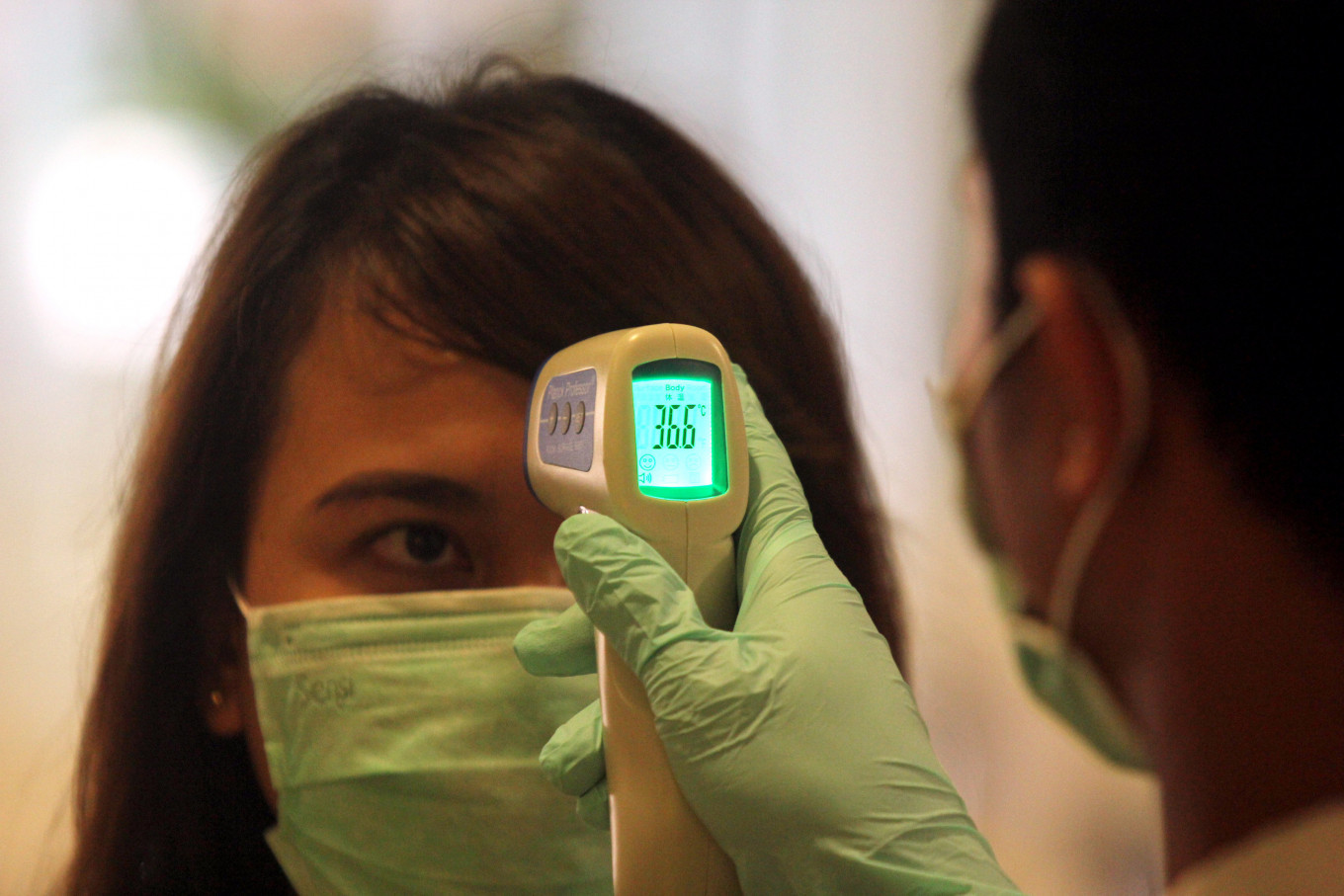Popular Reads
Top Results
Can't find what you're looking for?
View all search resultsPopular Reads
Top Results
Can't find what you're looking for?
View all search resultsWanted: Health leaders with clear vision, courage
This is a story about two health ministers, the late Endang Rahayu Sedyaningsih and Nafsiah “Naf” Mboi.
Change text size
Gift Premium Articles
to Anyone
T
his is a story about two health ministers, the late Endang Rahayu Sedyaningsih and Nafsiah “Naf” Mboi. When covering health issues from 2010 to 2013, I was deeply impressed with their strong leadership, which is crucial to helping Indonesia achieve its dream of being an overall healthy nation.
Each leader has his or her own challenges, and no policy can be based on a one-size-fits-all philosophy, so this is not an analytical comparison of ministers.
Nevertheless, we may be fortunate that amid the COVID-19 coronavirus scare, previous ministers have left useful legacies, including Health Minister Terawan Agus Putranto. With many natural disaster-prone areas and a high migration rate, Indonesia cannot be free from endemic diseases and infection transmissions. But with their solid leadership, Bu Endang and Bu Naf at least instilled confidence that the government could handle emergencies while prioritizing public health and safety.
Appointed on Oct. 22, 2009, to replace health minister Siti Fadillah Supari, Endang, a former adviser for the World Health Organization, initiated many programs to improve public health. She prioritized healthcare reforms to combat the stubbornly high rates of not only infectious diseases but also malnutrition and maternal and child mortality.
The reforms to improve public health were part of her vision to achieve national targets under the global Millennium Development Goals by 2015.
When Indonesia faced potential threats from the highly pathogenic avian influenza virus (H5N1) in 2011, Endang explained the avian influenza virus was endemic to bird species and that it rarely infected humans, but she also reminded everyone to remain on guard against possible mutations of the virus into new subtypes that could easily infect humans.
She did not want us to take the situation lightly despite the very low number of recorded cases of human infection at the time.
“The bird flu virus could mutate or even directly infect humans and start to develop into an influenza pandemic,” she said in September 2011. No one knew when the virus would infect humans and under what circumstances.
To cope with the threat, the government improved the BSL-3 Laboratory, which has the capacity to contain agents that could cause severe or lethal disease as a result of contact or inhalation, under the Health Ministry’s Health Research and Development Agency (Balitbangkes). The ministry also cooperated with the Agriculture Ministry, which conducted inspections to detect sick chickens, while requiring poultry breeders to implement hygiene procedures.
The Health Ministry prepared hospitals, ambulances and other emergency facilities and ensured all health workers, including in community health centers (Puskesmas), were well-prepared to handle bird flu patients. Oseltamivir tablets were provided free everywhere for people at risk of infection.
Endang was widely appreciated for the transparency she showed regarding hospital capacity to handle bird flu. She explained that of the 100 hospitals assigned since 2007 as referral centers for avian influenza, only a few facilities had airborne infection isolation rooms with the required negative pressure.
Conducting lab tests was an expertise the government sought to develop at the time to tackle the disease. This was because further tests, involving virus sequencing, was needed for more accuracy, following the swab test results of suspected H5N1 patients. Not all labs had this capacity, Endang admitted. The Health Ministry oversaw all labs to ensure they observed proper standard operating procedures and assessed whether lab personnel could use reagents test kits properly.
Evidently, Endang had sufficient expertise in public health, but always remained faithful to the rules.
Her successor, Nafsiah, displayed a similar willingness to work with other health professionals whose advice she heeded.
Nafsiah responded quickly to reports of the spread of a new strain of the H5N1 virus. While asserting that Indonesia had no cases of human infection, the minister nevertheless wanted all parties to anticipate the possibility of animal-human transmission.
Nafsiah said Indonesia’s success in combating the H5NI virus that killed both chickens and humans was not a reason to become complacent because the virus could rapidly mutate.
To prevent the spread of the new strain, the government temporarily stopped importing poultry products from Australia.
The former secretary of the National AIDS Commission also persistently pushed for greater youth access to sexual and reproductive healthcare services to better avoid unintended pregnancies and sexually transmitted diseases, including HIV/AIDS.
Once misquoted as propagating “condomization” or “free-condom giveaways” to students and adolescents, Nafsiah relentlessly campaigned on the importance of condom use, especially for those considered at high risk, explaining that condoms were still the most effective form of HIV prevention and control.
Under her ministry leadership, fewer babies born to HIV-positive mothers tested positive, thanks to the antiretroviral (ARV) treatment received by the pregnant women under her policy of “strategic antiretroviral drug use”. With expanded access of ARV treatment, the case fatality rate (CFR) of infections was reduced to as low as 0.4 percent of total cases as of June 2014.
Many of Nafsiah’s tasks suited her concern for providing healthcare services for women and children. She also played a key role in the issuance of a 2012 governmental regulation on tobacco control to curb smoking addiction, especially among children.
Both ministers always laid out their policies in clear and well-measured statements, which left little room for polemicizing, and remained highly resolute when undertaking their duties.
They serve as role models for public health leadership. Suddenly, I miss Bu Endang and Bu Naf very badly.










